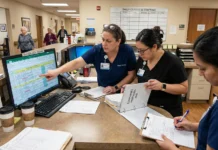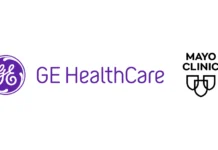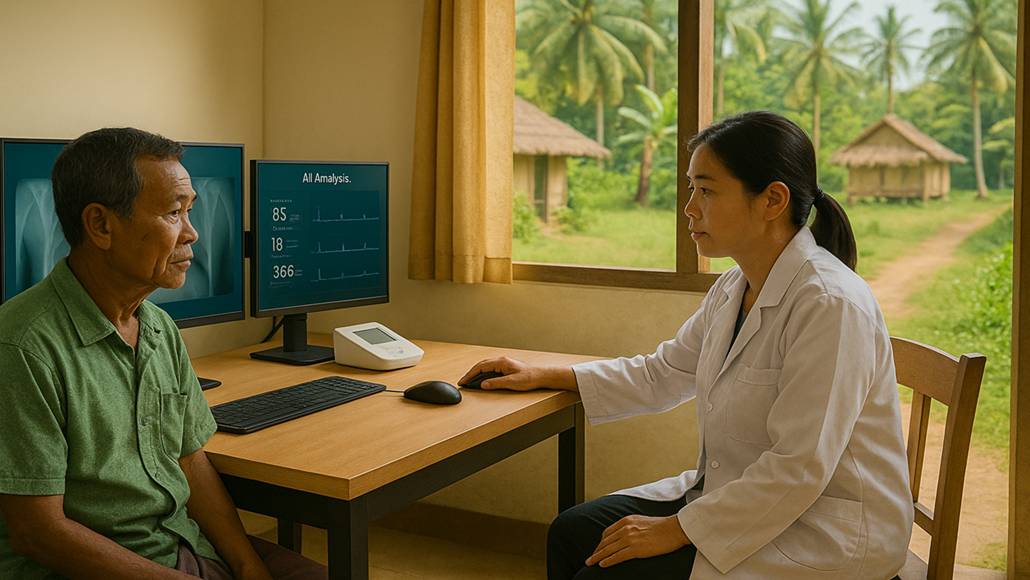In the ever-growing healthcare landscape, the integration of technology has gone on to prove to be a game changer, especially when we talk about underserved as well as remote regions. One of the most prominent advancements in this spectrum happens to be the emergence of AI-powered diagnostic hubs. These innovative stations are indeed transforming rural healthcare access across Southeast Asia by way of bringing city-grade medical decision support to populations that in the past lacked such resources. This report goes on to delve into the effect of AI diagnostic stations on rural healthcare, thereby exploring their capacities, challenges, benefits, and also their future when it comes to medical care across these regions.
When we talk of access to quality healthcare, it happens to remain a pressing challenge across many rural areas, especially in Southeast Asia. The disparity when it comes to rural as well as urban healthcare services has led to a rising recognition of the requirement for innovative solutions in order to bridge this kind of gap. AI-powered diagnostic hubs happen to represent a very promising approach in order to overcome these barriers, thereby offering advanced medical support tools, which elevate the precision of diagnostics and at the same time enhance the outcomes for patients.
By way of leveraging artificial intelligence, these diagnostic stations can evaluate the data of patients, provide clinical insights, and also help with timely interventions, therefore transforming the healthcare delivery in remote locations. Due to the potential when it comes to revolutionizing rural healthcare access, AI-powered diagnostic hubs are all set to play a very critical role in elevating health equity and, at the same time, enhancing the quality of life for the populations that are, till now, underserved.
The requirement for AI-powered diagnostic hubs
It is well to be noted that the healthcare disparities between urban and rural populations remain stark. As per the World Health Organization, almost 80% of the worldwide burden of disease happens to occur in low- and middle-income countries in which healthcare resources are often very scarce. Across Southeast Asia, rural communities often face prominent challenges while accessing the required health services, leading to diagnosis delays as well as treatment options that remain inadequate.
Elevating the precision in diagnostics
One of the primary benefits of AI-powered diagnostic hubs happens to be their capacity to elevate diagnostic precision. Traditional diagnostic methodology often needs extensive training as well as experience, making it less effective across areas where specialist physicians happen to be in short supply. Algorithms can evaluate massive amounts of medical data, pinpoint the patterns, and also generate insights, which may not be easily available to human practitioners. For example, studies have gone on to show that AI systems can outperform the human doctors in certain specific diagnostic areas like interpreting the medical images along with identifying the diseases. A prominent example happens to be the usage of AI within radiology, in which algorithms have gone on to demonstrate a very high rate of precision when it comes to detecting conditions such as breast cancer and pneumonia as compared to experienced radiologists. By way of integrating such kind of technology into rural healthcare settings, AI-powered diagnostic hubs can prominently decrease the diagnostic challenges and enhance the outcomes in patients.
Expansion of healthcare services access
It is worth noting that AI-powered diagnostic hubs play a very critical role when it comes to expanding access to healthcare services across rural communities. There are many rural areas that struggle with the shortage of healthcare professionals, thereby making it very challenging for residents to receive timely attention within the medical space. AI diagnostics happen to offer a very practical solution by way of giving remote access to medical expertise.
By way of telemedicine capacities, healthcare providers can connect with patients across locations, thereby helping them with virtual consultations as well as assessment of diagnostics. This kind of approach not just saves time and even the travel expenditure of patients but also helps the healthcare professionals to reach a wider population without having constraints related to geographical barriers.
Supporting the healthcare workers
Let us be clear, then: integration of AI-powered diagnostic hubs within rural healthcare settings does not replace the healthcare workers at all; rather, it elevates their capabilities. By way of offering decision support tools, these hubs help healthcare providers with the information that they require in order to make informed decisions in a very quick way. This kind of support is especially crucial in areas wherein the healthcare workers may come across a very diverse range of medical conditions without having major assistance when it comes to specialists.
For example, AI diagnostic stations can provide real-time guidance when it comes to treatment protocols, recommended tests, and also follow-up care, thereby helping the healthcare workers to offer more effective as well as efficient patient management. This kind of elevated support at the end of the day leads to better healthcare quality along with improved patient satisfaction.
What are the various challenges along with considerations?
While AI-powered diagnostic hubs happen to have immense promise when it comes to revolutionizing rural healthcare access, there are numerous challenges and considerations that have to be looked into. One of the primary challenges happens to be the requirement for robust infrastructure in order to support these technologies. Rural areas, as we all know, often lack dependable internet connectivity, which is very critical for the effective functioning of AI diagnostic hubs. Addressing these kinds of connectivity issues is primary in order to make sure that the advantages of AI technologies become accessible to all.
Moreover, execution of AI-powered diagnostic hubs often raises questions with regard to data privacy as well as security. Protecting the patient information has to be right at the forefront, and stakeholders must make sure that there are appropriate safeguards in place in order to protect against data breaches as well as unauthorized access. Developing a very clear guideline when it comes to data management and making sure of compliance along with regulations is going to be vital in order to maintain patient trust and at the same time also ensure that there is a successful adoption of these technologies.
Apart from this, the AI diagnostic hub integration within existing healthcare systems needs effective training along with education for healthcare workers. Helping the providers to get familiarized with the AI technologies and their capabilities is going to be essential in order to maximize their potential and, at the same time, make sure that healthcare workers can make utmost use of these tools in a very effective way.
AI-powered diagnostic hub – their future
As the demand when it comes to innovative healthcare solutions continues to grow, the future of AI-powered diagnostic hubs looks very, very promising. The worldwide market, when it comes to AI in healthcare, is anticipated to reach almost $45.2 billion by 2026, which is going to be driven by advancements in technology along with rising awareness in terms of the advantages of AI applications within medical settings. Across Southeast Asia, the adoption when it comes to AI diagnostic hubs happens to represent a very prominent opportunity in order to address healthcare disparities and also elevate health outcomes across underserved populations. There are ongoing research and development efforts that will continue to refine the capacities of AI diagnostic hubs by leading to more sophisticated algorithms along with enhanced decision-making and diagnostics. Moreover, partnerships between technology companies, government agencies, and healthcare providers are going to be very critical for driving the broad execution of these hubs across healthcare systems.
Successful execution – a look at some case studies
There are several pilot projects as well as case studies throughout Southeast Asia that illustrate the transformative effect of AI-powered diagnostic hubs when it comes to rural healthcare access.
For example, in Indonesia, there is a collaborative initiative between local health authorities and an AI tech start-up, which has gone on to introduce AI diagnostic stations across remote villages. These hubs help the healthcare workers to perform quick diagnostics in terms of infectious diseases like malaria and tuberculosis, hence significantly decreasing the time taken to initiate any kind of treatment.
In rural Thailand, similarly, AI-powered diagnostic hubs have been rolled out in order to assist health workers in pinpointing as well as managing chronic diseases like hypertension and diabetes. By way of making utmost use of AI-driven insights, providers can offer customized interventions and, at the same time, follow-up care to patients, thereby leading to enhanced health outcomes and also reduced healthcare expenditures.
Conclusion
It is well to be noted that AI-powered diagnostic hubs are all set to revolutionize rural healthcare access across Southeast Asia and hence bridge the gap between quality medical care and underserved populations. By way of elevating diagnostic precision, broadening healthcare services access, and also supporting healthcare workers, these innovative stations are indeed transforming the rural healthcare spectrum. However, addressing the kind of challenges that are related to infrastructure, data privacy, and training is necessary in order to make sure of a successful execution of such technologies.
As the global demand when it comes to healthcare innovation continues to grow, AI diagnostic hubs happen to represent a very prominent opportunity to enhance health equity and at the same time improve the quality of life among individuals who are living in rural areas. By way of investing in these technologies and fostering partnerships between stakeholders, Southeast Asia can as well position itself at the forefront of healthcare advancement by making sure that all populations have an equal access to the medical services that they require.


















